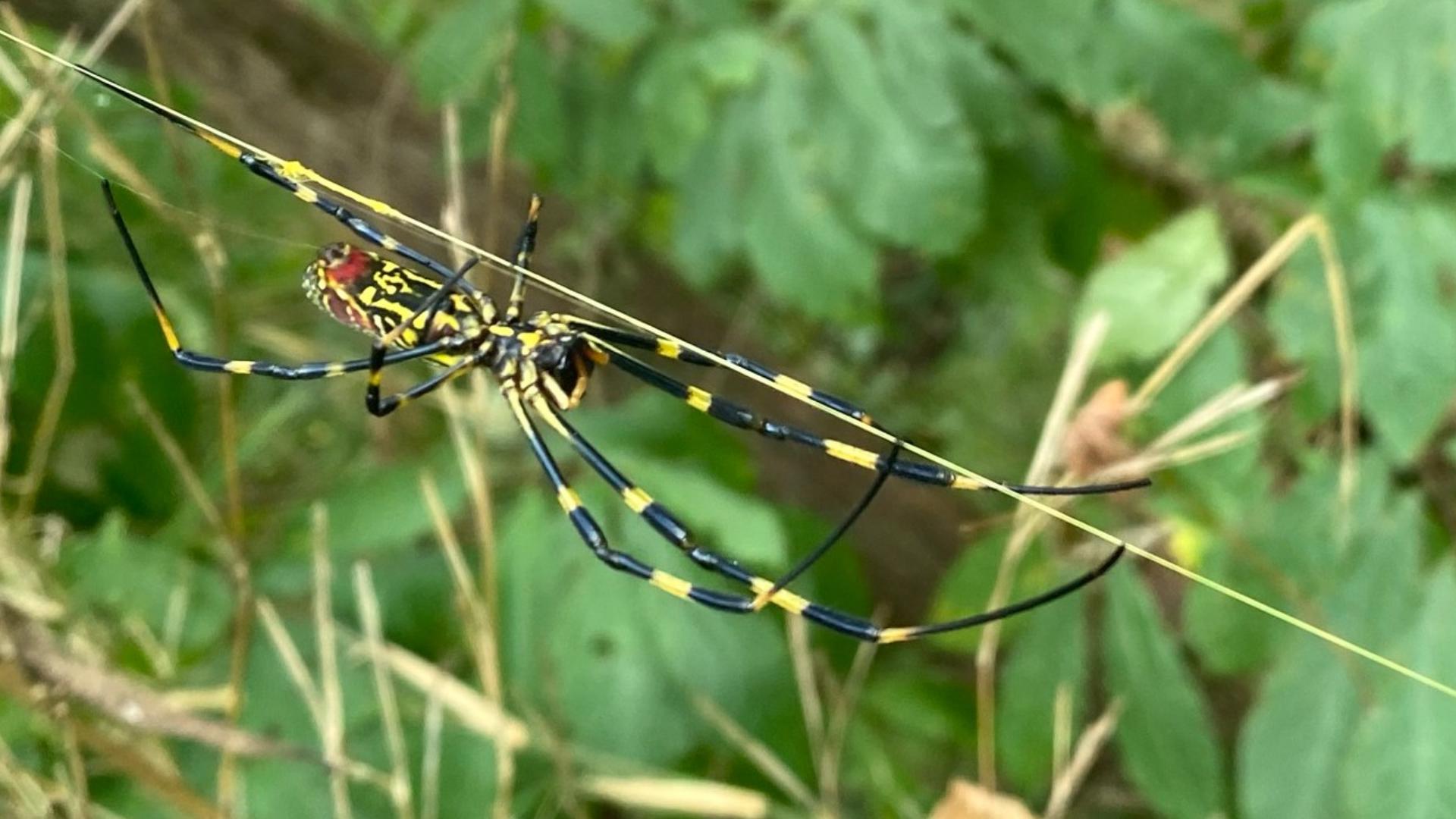ATHENS, Ga. — Heart racing and blood pumping, October is the time of year to celebrate all things spooky -- but this is one fright Georgians can't seem to escape: Joro spiders.
These large spiders with hints of yellow weave enormous golden webs. New research is revealing why these creepy crawlies are being seen in one's doorways, lamposts -- everywhere.
Dr. Andy Davis, an assistant research scientist at the University of Georgia's Odum School of Ecology started studying the spiders when he found he couldn't escape them in his own backyard.
"They're a nuisance here in Georgia," Davis said. "They're in our backyards, they're in our driveways, they're in our faces, they're literally on our street lamps."
He said people are freaked about Joro spiders year-round due to their appearances.
"They look scary, and they are scary looking, to be fair. And their webs are enormous, so they're not doing themselves any favors," Davis said.
But appearances can be deceiving. Just like kids coming to doorsteps on Halloween dressed up to cause a fright, the Joros may not be what they seem.
In fact, research student Ella Blakely said that they're not looking to be harmful.
"I found that they're really docile, they're not aggressive, and maybe we could live with them," Blakely said.
New research at UGA's Odum School of Ecology suggests they're not scared to live with us.
While Joro spiders might get one's heart pumping, researchers are testing how fast the spiders' hearts beat when they're stressed.
"It's really loud, it's really disturbed, and we found the Joro spiders seemed to have no problems living in these really busy roads," he said.
Research proves that these spiders are exceptional at dealing with stressful or loud environments.
"It's another piece of the same puzzle, figuring out how these Joro spiders can live with humans so readily," Davis said.
His previous work proved that spiders are also well-suited to cold temperatures and will likely thrive as the population spreads throughout the country.
"This spider, for better or for worse, is a bit of a media sensation," he said.
But he wouldn't say he's rooting for the spider.
"I'll get hate mail for that," he joked.
But if we can't learn to love them, we have to learn to live with them.
"I think people need to get over their arachnophobia, which is a hard sell," he said.
Overall, Davis' research shows that Joro spiders are one of the shyest spider species ever documented -- they're not aggressive and really just want to leave people to leave them alone,
So, if you happen to come across this creepy crawly critter on Halloween -- try to take a deep breath and don't let it get your heart pumping. And always remember, looks can be deceiving this spooky season.
Hover over the picture below to try to find the Joro spider.
What else to know about Joro spiders
UGA's Odum School of Ecology has done numerous research projects to learn about these spiders. Below are some key details from the findings and links to find out more about the research.
A study by UGA suggests that spiders can tolerate urban landscapes better than most native spiders. The research found that although Joros near busier roads are less likely to attack stimulated prey, they still are about the same weight as others living in less busy locations. They are also tolerant of vibrations and noise that come with living in a city.
Dr. Davis has also done research and discovered that Joro spider webs are seemingly strong enough to hold a bird, according to a release. While helping his son with a science project, he attempted to measure the strength of the webs. He found that the webs could hold up to 69 grams, which is strong enough to support birds like cardinals.
According to a release by UGA in 2022, a study found that the Joro spider's high metabolism, heart rate and ability to withstand the cold may help them spread and exist beyond the Peach State and the Southeast. Joros are also able to use their silks to carry them with the wind to new locations. Humans are also a factor in spreading to different locations as they could potentially hitch a ride in a car or something else along those lines.
According to UGA, the Joros are timid and are more likely to run away than bite. Davis said that even if they did try to bite, most have fangs that are too small to puncture human skin. The spiders are not harmful to people or pets. So far, UGA said that there has been no indication that the spiders will be invasive to the point that it's disruptive or economically costly.

